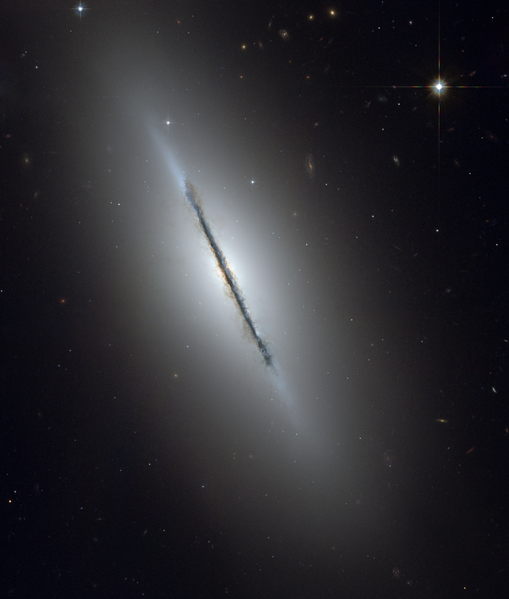Fail:Ngc5866 hst big.png
Ilme

Selle eelvaate suurus: 509 × 599 pikslit. Teised eraldusvõimed: 204 × 240 pikslit | 408 × 480 pikslit | 652 × 768 pikslit | 870 × 1024 pikslit | 1739 × 2048 pikslit | 3190 × 3756 pikslit.
Algfail (3190 × 3756 pikslit, faili suurus: 25,78 MB, MIME tüüp: image/png)
Faili ajalugu
Klõpsa kuupäeva ja kellaaega, et näha sel ajahetkel kasutusel olnud failiversiooni.
| Kuupäev/kellaaeg | Pisipilt | Mõõtmed | Kasutaja | Kommentaar | |
|---|---|---|---|---|---|
| viimane | 16. veebruar 2009, kell 20:38 |  | 3190 × 3756 (25,78 MB) | Spencer | {{Information |Description={{en|1=From original NASA press release: :This is a unique view of the disk galaxy en:NGC 5866 tilted nearly edge-on to our line-of-sight. Hubble's sharp vision reveals a crisp dust lane dividing |
Faili kasutus
Seda faili kasutab järgmine lehekülg:
Globaalne failikasutus
Järgmised muud vikid kasutavad seda faili:
- Faili kasutus vikis ab.wikipedia.org
- Faili kasutus vikis ace.wikipedia.org
- Faili kasutus vikis af.wikipedia.org
- Faili kasutus vikis af.wikibooks.org
- Faili kasutus vikis af.wikiquote.org
- Faili kasutus vikis af.wiktionary.org
- Faili kasutus vikis ak.wikipedia.org
- Faili kasutus vikis als.wikipedia.org
- Faili kasutus vikis am.wikipedia.org
- Faili kasutus vikis am.wiktionary.org
- Faili kasutus vikis ang.wikipedia.org
- Faili kasutus vikis ang.wiktionary.org
- Faili kasutus vikis an.wikipedia.org
- Faili kasutus vikis an.wiktionary.org
- Faili kasutus vikis arc.wikipedia.org
- Faili kasutus vikis ar.wikipedia.org
- Faili kasutus vikis ar.wikibooks.org
- Faili kasutus vikis ar.wikinews.org
- Faili kasutus vikis ar.wikiquote.org
- Faili kasutus vikis ar.wikisource.org
- Faili kasutus vikis ar.wikiversity.org
- Faili kasutus vikis ar.wiktionary.org
- Faili kasutus vikis arz.wikipedia.org
- Faili kasutus vikis ast.wikipedia.org
- Faili kasutus vikis ast.wiktionary.org
- Faili kasutus vikis as.wikipedia.org
- Faili kasutus vikis av.wikipedia.org
- Faili kasutus vikis ay.wikipedia.org
- Faili kasutus vikis ay.wiktionary.org
- Faili kasutus vikis az.wikipedia.org
- Faili kasutus vikis az.wikibooks.org
- Faili kasutus vikis az.wikiquote.org
- Faili kasutus vikis az.wikisource.org
- Faili kasutus vikis az.wiktionary.org
- Faili kasutus vikis bat-smg.wikipedia.org
- Faili kasutus vikis ba.wikipedia.org
- Faili kasutus vikis bcl.wikipedia.org
- Faili kasutus vikis be-tarask.wikipedia.org
- Faili kasutus vikis beta.wikiversity.org
- Faili kasutus vikis be.wikipedia.org
Vaata selle faili globaalset kasutust.
